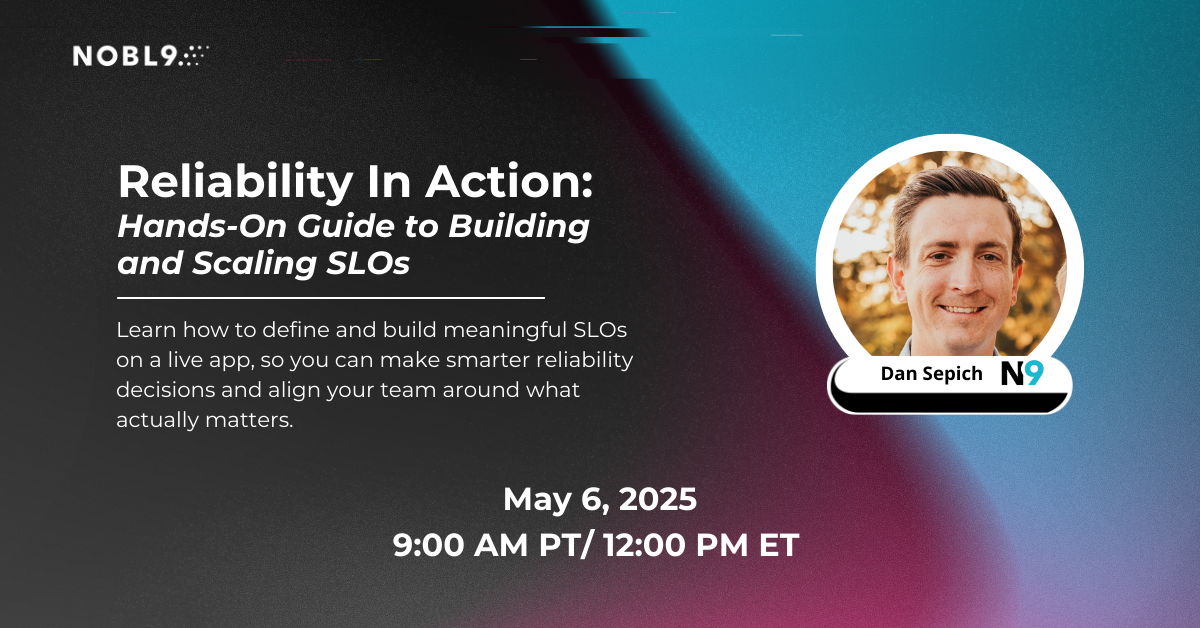More by Erza Zylfijaj:
Driving Cultural Shift Towards Site Reliability Engineering Introducing A New Way of Creating, Managing, and Sharing Reports Nobl9 Named Finalist for CRN 2024 Tech Innovator Award in Application Performance and Observability SLOs Gone Wild: Surviving Service Level Chaos with Advanced Strategies Is MTTR Dead? Why SLOs are Revolutionizing Reliability. Strategies and Business Benefits of Implementing Service Level Objectives (SLOs) Are You Ready For #SLOconf? After SLOConf: A Conversation About Reliability How To Simplify Producing Pre-Recorded Talks with the Speaker Buddy System Navigating Service Level Objectives and Graceful Degradation: A Webinar with Stanza, Google, & Pagerduty| Author: Erza Zylfijaj
Avg. reading time: 2 minutes
This month, we’re rolling out a set of updates designed to make everyday reliability work more efficiently. From duplicating reports to formatting annotations and pulling in broader context, each change helps teams move faster without sacrificing clarity.
Whether you're tracking an issue or putting together a report for your team, we’re releasing improvements to remove friction and get more value out of your investment in SLOs.
Global Annotations, Phase One: Full-Platform Visibility
The new Global Annotations table pulls annotation data from across your environment into one view. This makes it easier to track changes, review incidents, and monitor system activity.
You can:
- Filter by annotation type (for example, user-created or alert-based)
- Search by keyword
- Customize the column layout
- Scroll through large datasets with improved performance
- Share direct links with filters applied
We also added quick-preview functionality. Click any annotation to view full details in a side panel without navigating away.
Example of an alert-based annotation with full context — including error budget impact, policy condition, and linked alert details.
Copy Reports in Seconds
Reports can be time-consuming to build, especially when you're rolling up SLOs across services, applying filters, or customizing labels. The new Copy Report feature lets you duplicate any existing report with a single click, update the title, and tweak the content without starting from scratch. This functionality is available from both the report list and the detailed report view. It’s especially useful for things like custom roll-ups or team-specific dashboards.
Markdown Support in Annotations
You can now use Markdown when writing annotation descriptions. This makes it easier to structure content, add links, or include quick formatting without losing context.
Markdown currently supports:
- Headings, bold and italic text, and hyperlinks
- Ordered and unordered lists
- Code blocks
- Safe inline HTML
We’re working on a built-in rich text editor to make formatting more accessible for everyone, no Markdown required.
Markdown brings structure and fun to your annotations, with support for code blocks, quotes, and custom notes across your org.
Quality-of-Life Improvements
SLI Analyzer Table Enhancements
The SLI Analyzer has moved to our newer table framework. You can now see:
- Who triggered each analysis and when
- The data source being used
- The time window of the analysis
- The current status of the process
These updates make it easier to sort, filter, and understand analysis activity across teams.
Email Report Sharing
You can now schedule Nobl9 reports to be sent by email, making it easier to share insights across your team, even if some recipients don’t regularly log in.
Each email includes:
- Report type and applied filters
- SLO status summaries and trends
- A link to open the full report for those with access
Learn how to set up scheduled email reports in our docs
These updates are live or rolling out soon. Want to learn more about these features and what else is new?
Schedule a demo with our team.









.png?width=1200&height=628&name=Building%20Reliable%20E-commerce%20Experiences%20(24).png)
.png?width=1200&height=628&name=Building%20Reliable%20E-commerce%20Experiences%20(22).png)
.png?width=1200&height=628&name=Building%20Reliable%20E-commerce%20Experiences%20(19).png)





Do you want to add something? Leave a comment